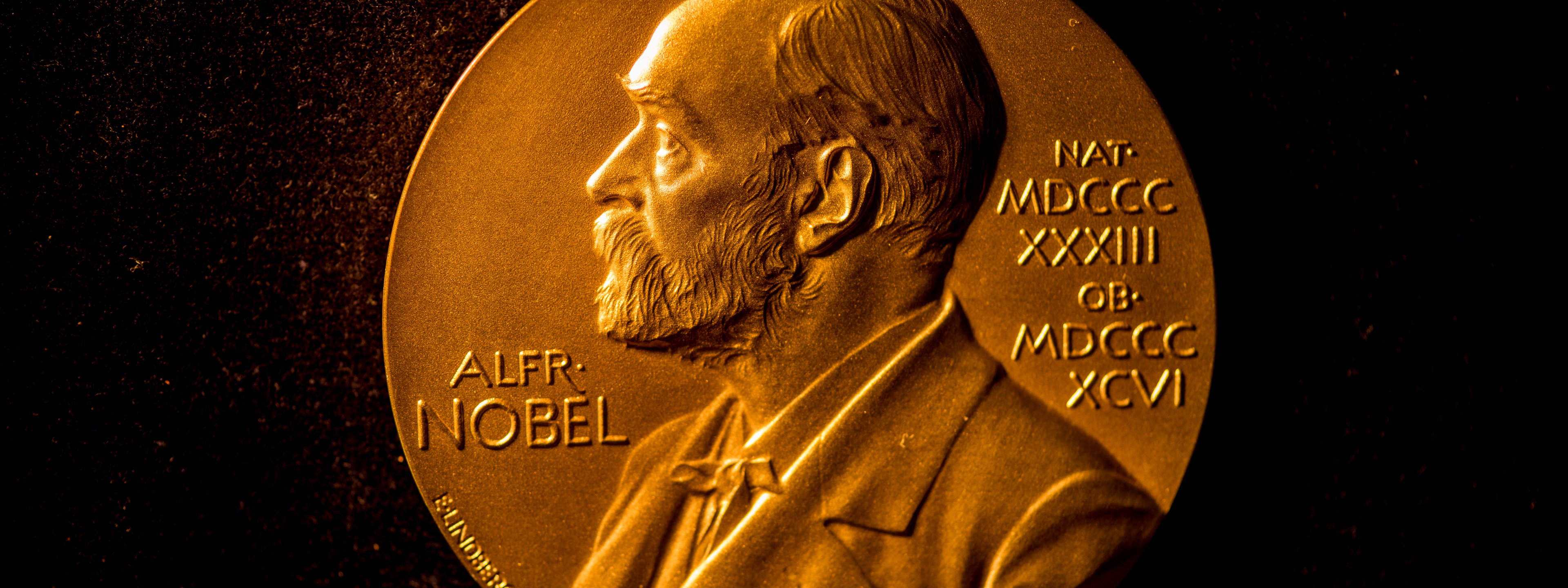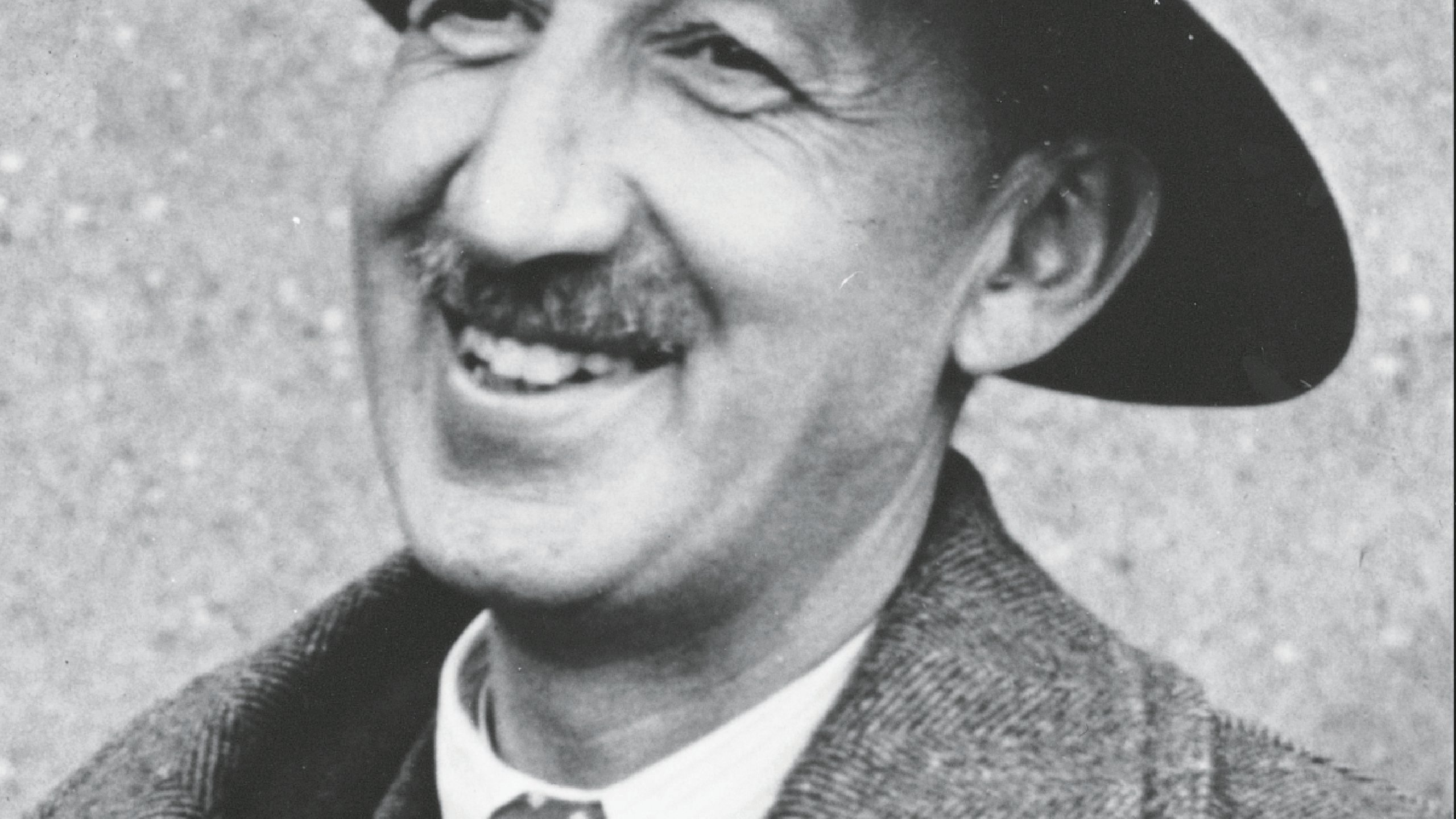“While the invading forces marched in the streets of Copenhagen, I was busy dissolving Laue’s and also James Franck’s medals.”
Since 1901, the Nobel Prize medals have been part of many remarkable stories. Three Nobel Prize medals had to be dissolved in Denmark to keep them hidden from the Nazis. Two Nobel Prize medals were mixed up between different laureates and it subsequently took them four years to correct the mistake. One Nobel Prize medal caused confusion at airport security as it turned up completely black in the X-ray machine in Fargo, North Dakota. This is, to say the least, a very special gold medal.
In 1902, the laureates received the first “real” Nobel Prize medals for physics, chemistry, physiology or medicine and literature designed by the Swedish sculptor and engraver Erik Lindberg. Then you might ask why not since 1901, when the first Nobel Prizes were awarded? The reason for the delay was because the designs of the reverse sides of the “Swedish” Nobel Prize medals were not finalized in time for the first award ceremony in 1901. The designs needed to be approved by each prize-awarding institution.
From Erik Lindberg’s correspondence with his father Professor Adolf Lindberg, it seems as if each of the 1901 laureates received a “temporary” medal – a medal bearing the portrait of Alfred Nobel, struck in a baser metal – as a memento until the “real” medals were finished. The first of these medals were not completed and struck until September 1902.

Erik Lindberg was living in Paris during the years he designed the medals which according to the Irish poet William Butler Yeats can be observed in the design that feels French. After Yeats received the Nobel Prize in Literature in 1923 he wrote the following in “The Bounty of Sweden” (The Cuala Press, Dublin, 1925): “All is over, and I am able to examine my medal, its charming, decorative, academic design, French in manner, a work of the nineties. It shows a young man listening to a Muse, who stands young and beautiful with a great lyre in her hand, and I think as I examine it, ‘I was good-looking once like that young man, but my unpractised verse was full of infirmity, my Muse old as it were; and now I am old and rheumatic, and nothing to look at, but my Muse is young’.”
Yeats together with all other laureates since 1901 have received Nobel Prize medals created based on the original designs by Erik Lindberg. As Erik Lindberg was responsible for designing the “Swedish” Nobel Prize medals, the Norwegian sculptor Gustav Vigeland was entrusted to design the Norwegian Nobel Peace Prize medal in 1901. However, as Gustav Vigeland was a sculptor and not a medal engraver, Erik Lindberg made the dies for the peace medal based on Vigeland’s designs. Their designs are used still today. The medal for the memorial prize in economic sciences (established in 1968 in connection with the 300th anniversary of the Sveriges Riksbank), was designed by Gunvor Svensson-Lundqvist.
All medals have some differences in design (except physics and chemistry that look the same) but they all are “a gold medal bearing the image of the testator and an appropriate inscription.” The front side of all medals features a portrait of Alfred Nobel in various versions. On the reverse side of all three “Swedish” Nobel Prize medals, the main inscription is the same: “Inventas vitam iuvat excoluisse per artes,”while the images vary according to the symbols of the respective prize-awarding institutions. The Nobel Peace Prize medal has the inscription “Pro pace et fraternitate gentium” and the economic sciences medal has no quotation at all on the reverse.
On all “Swedish” Nobel Prize medals the name of the laureate is engraved fully visible on a plate on the reverse, whereas the name of the peace laureate as well as that of the laureate for the prize in economic sciences is engraved on the edge of the medal, which is less obvious. For the 1975 laureates in economic sciences, the Russian Leonid Kantorovich and the American Tjalling Koopmans, this created problems. Their medals were mixed up in Stockholm, and after the Nobel Week the laureates went back to their respective countries with the wrong medals. As this happened during the Cold War, it took four years of diplomatic efforts to have the medals exchanged to their rightful owners.
Up to 1980 the “Swedish” medals, each weighing approximately 200 g and with a diameter of 66 mm, were made of 23 carat gold. Since then they have been made of 18 carat recycled gold. The weight is set to 175 g for all medals, except for the medal for economic sciences. Its weight is set to 185 g.

There are many rumors of what happened to the Nobel Prize medals of three Nobel Prize laureates in physics during World War II: the medals of the Germans Max von Laue (1914) and James Franck (1925), and of the Dane Niels Bohr (1922). Professor Bohr’s Institute of Theoretical Physics in Copenhagen had been a refuge for German Jewish physists since 1933. Max von Laue and James Franck had deposited their medals there to keep them from being confiscated by the German authorities. After the occupation of Denmark in April 1940, the medals were Bohr’s first concern, according to the Hungarian chemist George de Hevesy (also of Jewish origin and a 1943 Nobel Prize laureate in chemistry, picture to the right), who worked at the institute. In Hitler’s Germany it was almost a capital offense to send gold out of the country. Since the names of the laureates were engraved on the medals, their discovery by the invading forces would have had very serious consequences. To quote George de Hevesy (Adventures in Radioisotope Research, Vol. 1, p. 27, Pergamon, New York, 1962), who talks about von Laue’s medal: “I suggested that we should bury the medal, but Bohr did not like this idea as the medal might be unearthed. I decided to dissolve it. While the invading forces marched in the streets of Copenhagen, I was busy dissolving Laue’s and also James Franck’s medals. After the war, the gold was recovered and the Nobel Foundation generously presented Laue and Frank with new Nobel Prize medals.” de Hevesy wrote to von Laue after the war that the task of dissolving the medals had not been easy, as gold is “exceedingly unreactive and difficult to dissolve.” The Nazis occupied Bohr’s institute and searched it very carefully but they did not find anything. The medals quietly waited out the war in a solution of aqua regia. de Hevesy did not mention Niels Bohr’s own Nobel Prize medal but documents in the Niels Bohr Archive in Copenhagen show that Niels Bohr’s Nobel Prize medal, as well as the Nobel Prize medal of the 1920 Danish laureate in physiology or medicine, August Krogh, had already been donated to an auction held on March 12, 1940 for the benefit of the Fund for Finnish Relief (Finlandshjälpen). The medals were bought by an anonymous buyer and donated to the Danish Historical Museum in Fredriksborg, where they are still kept. Regarding the Nobel Prize medals of von Laue and Franck, the Niels Bohr Archive has a letter from Niels Bohr dated January 24, 1950, about the delivery of gold to the Royal Swedish Academy of Sciences in Stockholm relating to these two medals. The proceedings of the Nobel Foundation on February 28, 1952, mention that Professor Franck received his recoined medal at a ceremony at the University of Chicago on January 31, 1952.
The 2011 physics laureate Brian Schmidt had a very special experience with his Nobel Prize medal at Fargo airport. His grandmother in Fargo, North Dakota had asked him to bring the medal as she wanted to see it. On his way home, Schmidt had to send his gold medal through the X-ray machine at airport security. The airport security seemed very confused with this completely black object on the screen and asked what it was and who gave it to him. Schmidt answered that it was a gold medal that he had received from ‘The King of Sweden.’ Their subsequent question was why the King had given him this medal where Schmidt answered ‘Because I helped discover the expansion rate of the universe was accelerating.’
See how the Nobel Prize medals are manufactured
24 photos
The Nobel Prize medals were produced by Myntverket (the Swedish Mint) in Eskilstuna, Sweden, 1902-2010.
Copyright © Myntverket 2011 Photo: Markus Marcetic
All the medals produced by Myntverket (the Swedish Mint) are well documented since the 18th century.
Copyright © Myntverket 2011 Photo: Markus Marcetic
Gold sheets are rolled out to the proper size.
Copyright © Myntverket 2011 Photo: Markus Marcetic
The punched raw material.
Copyright © Myntverket 2011 Photo: Markus Marcetic
No hurry - all the work is carried out very carefully.
Copyright © Myntverket 2011 Photo: Markus Marcetic
The medal is coined under high pressure.
Copyright © Myntverket 2011 Photo: Markus Marcetic
The medal is carefully examined after being coined.
Copyright © Myntverket 2011 Photo: Markus Marcetic
After a heat treatment the medal is cooled down.
Copyright © Myntverket 2011 Photo: Markus Marcetic
The medal is cooled down.
Copyright © Myntverket 2011 Photo: Markus Marcetic
The medal is washed in water.
Copyright © Myntverket 2011 Photo: Markus Marcetic
The medal is polished to get rid of oxides and ...
Copyright © Myntverket 2011 Photo: Markus Marcetic
... checked with a magnifying glass.
Copyright © Myntverket 2011 Photo: Markus Marcetic
All manufacturing of medals is a handicraft.
Copyright © Myntverket 2011 Photo: Markus Marcetic
All medals are handled and checked individually.
Copyright © Myntverket 2011 Photo: Markus Marcetic
The medals edges are leveled ...
Copyright © Myntverket 2011 Photo: Markus Marcetic
... to be checked once again.
Copyright © Myntverket 2011 Photo: Markus Marcetic
... which is done by hand.
Copyright © Myntverket 2011 Photo: Markus Marcetic
The engraving is checked with a magnifying glass ...
Copyright © Myntverket 2011 Photo: Markus Marcetic
... and subsequently approved.
Copyright © Myntverket 2011 Photo: Markus Marcetic
The medals are protected against scratches.
Copyright © Myntverket 2011 Photo: Markus Marcetic
The finished Nobel Prize medal.
© Myntverket 2011. Photo: Markus Marcetic
Photos: Courtesy of Myntverket (the Swedish Mint).
The Nobel Prize medals were struck by Myntverket (the Royal Mint) in Eskilstuna, Sweden, 1902-2010. 2011, the Nobel Prize medals and the Nobel Peace Prize medals were struck by Det Norske Myntverket (Mint of Norway) in Kongsberg, Norway. Since 2012 the Nobel Prize medals and the economic sciences medals have been manufactured by Svenska Medalj in Eskilstuna and the Nobel Peace Prize medals by Det Norske Myntverket (Mint of Norway) in Kongsberg. The cases in which the medals are kept were handcrafted by Anders Eriksson’s atelier.
More on the Nobel Prize medals and the medal for the prize in economic sciences:
Physics and chemistry
Physiology or medicine
Literature
Peace
Economic sciences
First published 11 March 1998